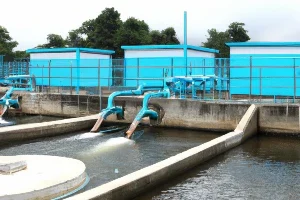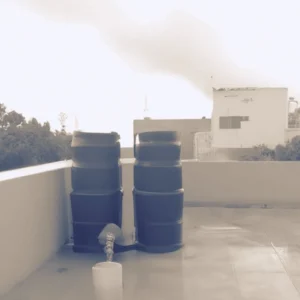OUR SERVICE
Water and wastewater management
Water management and water waste management are becoming increasingly important in today's world. We offer a wide range of services in these fields, including water treatment, storm water management, and water conservation. We are committed to providing sustainable solutions that help our clients reduce their water usage and protect the environment. With our comprehensive water management services, we'll help you conserve, treat and protect for a sustainable future. At our company, we specialize in providing STP, WTP, RWH, and ETP services to help our clients manage their water usage and protect the environment. We're dedicated to providing our clients with the latest sustainable solutions in STP, WTP, RWH, and ETP to help them conserve water and protect the environment.


STP
Sewage Treatment Plants
Sewage Treatment Plants (STP)
Sewage Treatment Plants (STP) are vital for managing and treating wastewater in both residential and industrial settings.

These systems use various physical, chemical, and biological processes to remove contaminants and pollutants from wastewater, making it safe to discharge into the environment or reuse.
STPs are designed to remove impurities such as suspended solids, bacteria, viruses, and other harmful microorganisms. They also remove nutrients such as nitrogen and phosphorus, which can contribute to water pollution if not properly treated.
There are different types of STPs, including primary treatment, secondary treatment, and tertiary treatment. Each type uses different methods to purify the wastewater. For example, primary treatment typically involves using screens and sedimentation to remove large particles and debris, while secondary treatment uses biological processes such as aeration to break down organic matter. Tertiary treatment, also known as advanced treatment, uses methods such as filtration, disinfection, and reverse osmosis to remove remaining impurities and pathogens.
STPs are not only important for protecting the environment and public health, but also for conserving water resources. By treating and reusing wastewater, STPs can help reduce the demand for fresh water and conserve this precious resource.
In addition, STPs also help in recycling the treated water for irrigation, flushing, and other non-potable uses, reducing the water footprint and saving the natural resources.
At our company, we offer a wide range of STP solutions, from design and installation to maintenance and repair. Our team of experts has the knowledge and experience to provide sustainable and efficient STP systems for any application. Contact us today to learn more about how we can help you manage and treat your wastewater.
WTP
Water Treatment Plants
Water Treatment Plants (WTP)
Water Treatment Plants (WTP) are essential for ensuring that the water supply is safe and clean for consumption, industry, and irrigation.
These systems use various physical, chemical, and biological processes to remove impurities and pollutants from water sources, making it safe to drink, use and discharge.
WTPs are designed to remove impurities such as bacteria, viruses, minerals, and other harmful substances, improving the water quality and make it safe for human consumption. They also remove dissolved impurities such as iron, manganese, and other dissolved minerals that can affect the taste and appearance of water.
There are different types of WTPs, including surface water treatment plants, ground water treatment plants, and seawater desalination plants. Each type of treatment plants uses different methods to purify the water. For example, surface water treatment plants typically involve using screens and sedimentation to remove large particles and debris, while ground water treatment plants use methods such as reverse osmosis, ion exchange and disinfection to remove impurities and dissolved minerals. Seawater desalination plants use methods such as reverse osmosis and thermal distillation to convert seawater into fresh water.
WTPs are not only important for protecting the environment and public health, but also for conserving water resources. By treating and reusing water, WTPs can help reduce the demand for fresh water and conserve this precious resource.
At our company, we offer a wide range of WTP solutions, from design and installation to maintenance and repair. Our team of experts has the knowledge and experience to provide sustainable and efficient WTP systems for any application. Contact us today to learn more about how we can help you manage and treat your water supply.
ETP
Effluent Treatment Plants
Effluent Treatment Plants (ETP)

These systems use various physical, chemical, and biological processes to remove contaminants and pollutants from the effluent, making it safe to release into the environment or reuse.
ETPs are designed to remove impurities such as suspended solids, heavy metals, chemicals, and other harmful substances from the effluent. They also remove nutrients such as nitrogen and phosphorus, which can contribute to water pollution if not properly treated.
There are different types of ETPs, including primary treatment, secondary treatment, and tertiary treatment. Each type uses different methods to purify the effluent. For example, primary treatment typically involves using screens and sedimentation to remove large particles and debris, while secondary treatment uses biological processes such as aeration to break down organic matter. Tertiary treatment, also known as advanced treatment, uses methods such as filtration, disinfection, and reverse osmosis to remove remaining impurities and pathogens.
ETPs are not only important for protecting the environment and public health, but also for conserving water resources. By treating and reusing effluent, ETPs can help reduce the demand for fresh water and conserve this precious resource.
In addition, ETPs also help in reducing the environmental footprint of the industries, by removing the pollutants and reducing the discharge to the rivers and other water bodies.
At our company, we offer a wide range of ETP solutions, from design and installation to maintenance and repair. Our team of experts has the knowledge and experience to provide sustainable and efficient ETP systems for any industrial application. Contact us today to learn more about how we can help you manage and treat your industrial wastewater.
RWH
Rain Water Harvesting
Rain Water Harvesting (RWH)

It involves collecting, storing, and using rainwater for various purposes, such as irrigation, flushing, and even drinking.
The process of rainwater harvesting typically involves the collection of rainwater from rooftops, gutters, and other surfaces using a system of pipes and channels. The collected water is then directed to a storage tank or cistern, where it can be used as needed.
Rainwater harvesting is beneficial for a number of reasons. For one, it can help reduce the demand for fresh water by providing an alternative source of water. Additionally, it can help prevent water pollution by reducing the amount of stormwater runoff that enters waterways.
In addition, rainwater harvesting can help to conserve water resources, by reducing the reliance on ground water and surface water, thus preserving them for future generations.
Rainwater harvesting systems are easy to install and require minimal maintenance, making them a great investment for both residential and commercial properties.
At our company, we offer a wide range of rainwater harvesting solutions, from design and installation to maintenance and repair. Our team of experts has the knowledge and experience to provide sustainable and efficient systems for any application. Contact us today to learn more about how we can help you conserve and reuse water with rainwater harvesting.
